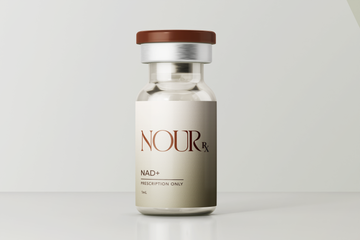When it comes to weight loss, there are a variety of treatments available that promise to help you shed those extra pounds. Two popular options that have been gaining attention are lipotropic injections and GLP-1 medications. Both are known for their ability to aid in weight management, but they work in very different ways. In this blog post, we'll break down the power of each, how they work, and which one might be right for your weight loss journey.
What Are Lipotropic Injections?
Lipotropic injections are a combination of vitamins, amino acids, and other compounds designed to help the body break down fat and increase energy. The key ingredients in lipotropic injections often include:
- Methionine: An amino acid that helps with fat breakdown and detoxification.
- Inositol: Supports fat metabolism and can promote healthier fat distribution.
- Choline: Aids in liver function and fat metabolism.
- Vitamin B12: Boosts energy levels and supports overall metabolic function.
These injections are usually administered to target fat loss, particularly in areas that are hard to reduce with diet and exercise alone. The idea is to stimulate the liver’s natural ability to metabolize fat, boost energy, and reduce fat accumulation, ultimately aiding in weight loss.
How Do Lipotropic Injections Work for Weight Loss?
Lipotropic injections help the body process fat more effectively by promoting the breakdown of fats in the liver. They also provide a significant boost of energy, which can make it easier for individuals to stay active and engaged in their weight loss plan. While they do not directly suppress appetite or alter metabolism like some other weight loss treatments, they enhance fat burning and may help with:
- Increased energy: Vitamin B12 helps reduce fatigue, making it easier to exercise.
- Fat metabolism: The lipotropic compounds support liver health and the breakdown of fats.
- Improved detoxification: The ingredients help the body get rid of toxins that may hinder fat loss.
Typically, lipotropic injections are used in conjunction with a balanced diet and regular exercise for the best results.
What Are GLP-1 Medications?
GLP-1 (glucagon-like peptide-1) medications are a class of drugs that mimic the natural GLP-1 hormone, which is produced in the intestines after eating. GLP-1 is known for its ability to regulate insulin, control blood sugar, and, importantly, suppress appetite.
Some popular GLP-1 medications include:
- Semaglutide (Ozempic, Wegovy)
- Liraglutide (Saxenda)
- Tirzepatide (Mounjaro)
GLP-1s have been approved not only for managing type 2 diabetes but also for weight loss in people who are overweight or obese. These medications are typically administered via weekly injections, and their weight loss benefits stem from a few key effects.
How Do GLP-1 Medications Work for Weight Loss?
GLP-1s primarily promote weight loss through appetite regulation and blood sugar control. Here’s how they work:
-
Appetite Suppression: GLP-1 mimics the effects of the natural hormone in your body, which signals to the brain that you’re full. This results in reduced hunger and a significant decrease in food cravings.
-
Slower Gastric Emptying: GLP-1 slows down the rate at which food leaves your stomach, leading to prolonged feelings of fullness and satiety after meals.
-
Improved Blood Sugar Regulation: By regulating insulin levels and reducing glucose production in the liver, GLP-1s help stabilize blood sugar, preventing the crashes that often lead to hunger and overeating.
GLP-1 medications have shown impressive weight loss results, with studies demonstrating an average weight loss of 10-20% of body weight in many individuals when used alongside a healthy diet and exercise.
Lipotropic Injections vs. GLP-1s: Key Differences
While both lipotropic injections and GLP-1 medications have weight loss benefits, they work in different ways. Here’s a side-by-side comparison of the two:
| Feature | Lipotropic Injections | GLP-1 Medications |
|---|---|---|
| How They Work | Support fat metabolism and detoxification in the liver. | Regulate appetite, slow gastric emptying, and stabilize blood sugar. |
| Primary Benefit | Increased energy, improved fat metabolism, and detox. | Appetite suppression, better blood sugar control, and fat loss. |
| Administration | Injected weekly or bi-weekly. | Injected weekly. |
| Target | Fat burning and energy boosting. | Appetite control and blood sugar regulation. |
| Side Effects | Generally mild (e.g., possible irritation at injection site). | Nausea, stomach upset, fatigue, and sometimes diarrhea. |
| Best For | Those looking to improve fat metabolism and energy levels. | Those struggling with hunger, cravings, and blood sugar issues. |
Which Option Is Right for You?
Both lipotropic injections and GLP-1 medications can be effective tools for weight loss, but they cater to different needs and goals.
-
Choose lipotropic injections if your primary focus is on enhancing fat metabolism, boosting energy levels, and supporting liver function. They are often best suited for those who are already committed to a healthy lifestyle and need an extra push to target stubborn fat areas.
-
Choose GLP-1 medications if you struggle with hunger, cravings, and blood sugar control. These medications are ideal for people who need help managing appetite and making more mindful food choices. GLP-1s are especially effective for those with overweight or obesity and can be a great option for long-term weight management.





